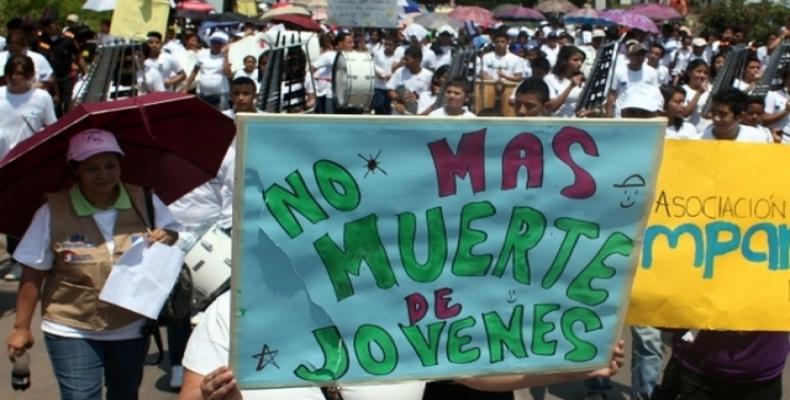Tegucigalpa, November 19 (PL-RHC)-- Some 3,776 children have violently died in Honduras over the past six years, according to the Observatory of Violence of the National Autonomous University of Honduras.
A report presented by that organization and quoted by El Tiempo newspaper denounced that 3,430 homicides of people between 12 and 18 years of age have been registered in 2008-2013 period. In the first half of this year, 346 minors have been added to this figure.
According to the Observatory, the most violent periods were 2012 and 2013, with 737 and 722 violent deaths, respectively. The institution also revealed that killings, street fights and common crime were the main causes of these deaths, while firearms and sharp weapons were the main murder weapons used against children.
San Pedro Sula, the country's second largest city, and Tegucigalpa, the capital, followed by Choloma and Cortes, were the most violence areas.
In mid-2014, authorities from the National Direction of Criminal Investigation said many minors are killed by gangs or “maras,” in reprisal for their refusal to join those criminal organizations operating in the country.
The UN list of non-conflict-torn countries with more violent deaths is led by Honduras, with a homicide rate of 85.5 for every 100,000 inhabitants.
More Than 3,700 Children Killed Over Past Six Years in Honduras

Articles en relation
Commentaires
Laissez un commentaire
Tous les champs sont requisPlus de visites
- Les tentacules interventionnistes de l'aide américaine en Europe de l'Est se révèlent à Cuba
- Minsap : Nous sommes toujours reconnaissants à ceux qui mettent en commun leur volonté et leurs ressources pour aider les institutions de santé
- Le CIPB et la FAO lancent un projet de production dans les secteurs de l'agriculture et de la pêche à Cuba
- Aider les opposants cubains, la plus ancienne mission de l'USAID
- L'économie mondiale en 2024 et les perspectives pour 2025 : les conséquences pour Cuba (II)

